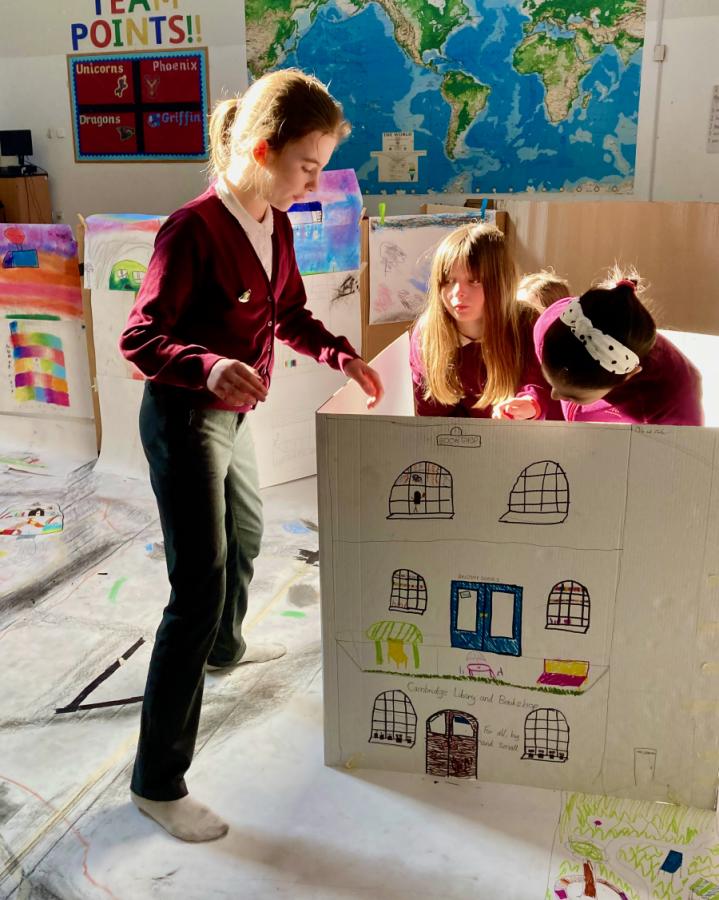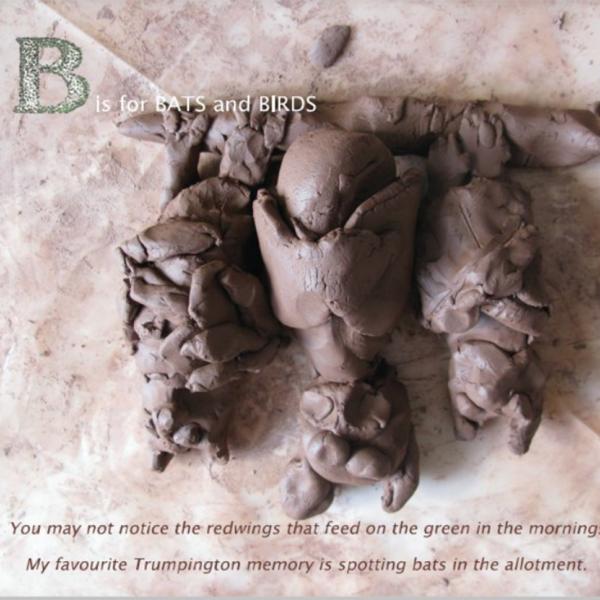One recurring aspect of CCI’s work involves collaborating with developers and planners to find ways to actively involve children, young people and their wider communities in thinking about how their city is changing.
This area of our work has its roots in a 2010 commission by Future City on behalf of Countryside Properties. The area around the south side of the city was being developed. Our publication Art and Living - an A – Z for Trumpington drew together the ideas, images and stories explored in workshops with children, families, and older residents and celebrated the creative potential of this community. It is still used as invaluable reference material by artists and other organisations engaging with these places.
Then in 2015 we were commissioned by the University of Cambridge to create Artscapers, the art-in-education programme for their North West Development. This work has sparked deep partnerships and important research collaborations.
As an organisation, we believe passionately that the voices of children and young people should be heard when working to imagine a better and more sustainable future. We regularly advocate for this when we’re invited to speak at events with groups such as Cambridge Carbon Footprint, Cambridge Resilience Web, and Transition Cambridge.
-
Planning the development, which is likely to take until sometime in the 2040’s to be completed, comes at a time when we are being asked by the climate emergency and the biodiversity crisis to re-imagine not just development but how we live. Children and young people are often so much better than adults at imagining a different future.
Frances Wright, TOWN



In 2022 we were invited by TOWN and U+I, the masterplanners of a new district of north east Cambridge - to contribute to a conversation with the community focusing on the question What Makes a Place? Over 100 young artscapers from Shirley Community Primary School and North Cambridge Academy worked with CCI artists Hilary Cox Condron, Susanne Jasilek, Helen Stratford, Sally Todd and Tonka Uzu.
Sally Todd's film (above) captures a flavour of the process and some of their wonderful ideas. Children decided that they wanted a school, library, art gallery, pet shelter, animal cafe, football stadium, rugby pitch, museum with WW2 bunker, small farm, strawberry hut, dinosaur museum, animal forest, woods, trees, pond, hot air balloons, eco-friendly planes and kites, windmill and dog park, supermarket, skate park, botanic gardens and underground exhibition, nature areas and grass, homeless shelter and movie theatre, hospital, pool, zoo and vet, a viewing platform in the trees and a place for fun among many other ideas.
At the end of the project, these themes and ideas were brought together for a final exhibition, to which the developers, architects, and those involved in the city’s public space planning and production were invited. A concluding phrase from one of the developers seemed to sum up both the aspirations and the success of the project: ‘This is our brief now.’
More recently (autumn 2023) we've worked with other young residents aged 11 - 25 from across the city to explore these questions. The workshops involved 24 young students and adults from diverse backgrounds, including college and secondary school students, young carers, not in education/training or employment, refugees, apprentice gardeners and young artists. A short report on this work can be read here.
A changing city in pictures...
-

-

-

-

-

-

-

-

-
 A page from Art and Living - an A to Z for Trumpington, published by CCI in 2010
A page from Art and Living - an A to Z for Trumpington, published by CCI in 2010
